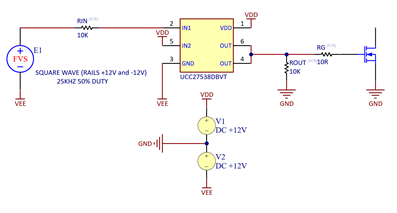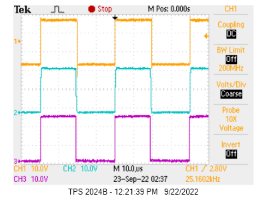Hi Team,
I have an application that uses UCC27538DBVT as a MOSFET gate driver, and I'm experiencing a weird problem. The UCC27538DBVT IC is getting hot without a reasonable explanation, according to a simplified schematic below.

According to the device datasheet the recommended operating conditions are:

My application uses 24V power supply (+12V and -12V) to power the device and for the pin 5 (IN2).
The input signal is 25kHz, 50% duty square wave.
Problem:
When I connect the input signal directly to pin 2 (NO RIN), the device starts to get hot. If I leave it on for a while, it will most likely damage the device. (it reached 80C when I turned off the power to avoid damage to the device).
As a workaround, I added a 10K resistor (RIN) in series with the input signal, and it works fine.
Any idea why the device is getting hot without RIN?
Thanks for considering my request.
Carlos


